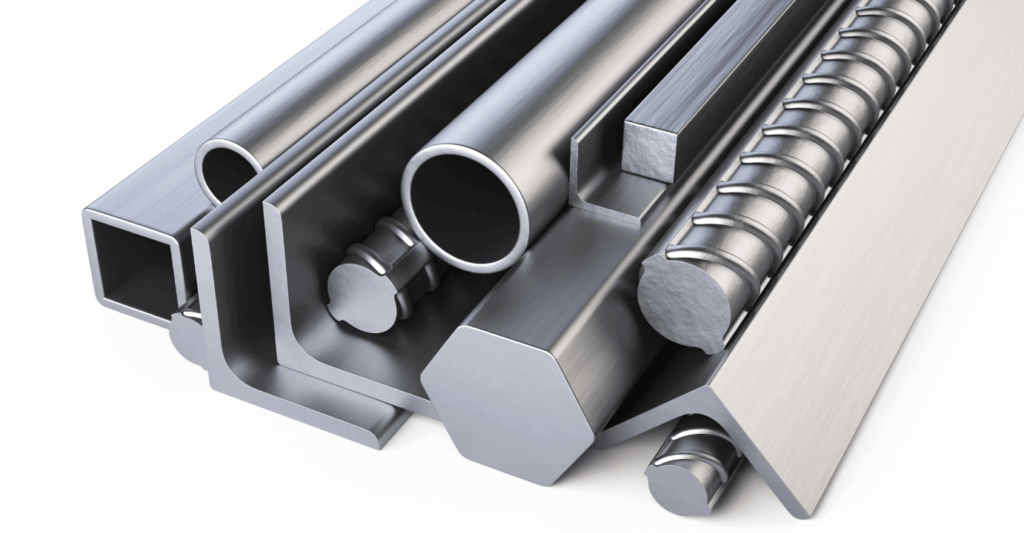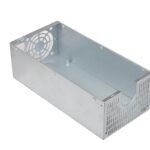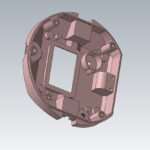Understanding the steel industry may be hard at times because the component this industry works on has 36 million variants. In general, we see a number of steel items back at home or other places as utensils. usually, they look the same but in many cases, you can point out the difference just by looking at it. At times, looking at alloy steel, you may feel that it is different from other steel. So, in the context of comparison with carbon steel, it can be stated that carbon steel has carbon with iron, while alloy steel has many components to produce the material.
Carbon steel
Considering carbon steel is purely made of carbon and iron atoms would be a mistake. It has and will have impurities. However, there are excess elements, which do not make the list because they do not change much of the texture and nature of the steel. On the other hand, steel is an alloy that contains iron. The properties can change to meet specific requirements. Saying so, it can be stated that the prime difference between carbon steel and alloy steel is the higher carbon content in the carbon steel.
Carbon steel is composed of iron and carbon, while alloy elements may be found in trace elements. There you can find silicon, manganese, sulfur, as well as phosphorus. There are two groups of carbon steel – high carbon steel and low carbon steel.
A higher amount of carbon in carbon steel makes it hard with lesser ductility, reduced welding requirements, as well as low melting points. The component is known as “Mild Steel” is one kind of low carbon steel. It has about 0.05% to 0.25% carbon. High iron content leaves it more corrosive. On the other hand, high carbon steels have 0.6% to 1.0% of carbon, which naturally makes them strong enough to be building materials.
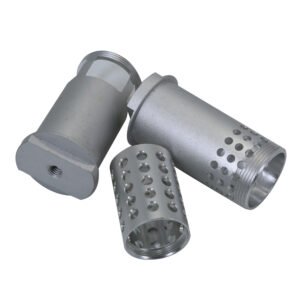
Alloy Steel
Alloy steel is the type of steel that bears a mixed presence of multiple components other than just carbon and iron. The elementary particles also include boron, chromium, vanadium, and nickel, apart from silicon. The quantity of these external items depends on the quality or the grade (decided according to its utility) of alloy steel. Usually, it is made to get the desired physical characteristics for the steel to meet certain purposes.
Like carbon steel, alloy steel also has two different grades. Low alloy steel is common in the industry. High alloy steels are those, which have over 8 elements in them. The addition of elements makes the alloy steel more durable. Considering this factor, alloy steel items are produced to support those parts, where stability or durability matters most.
Credibility over utility – Alloy Steel
Alloy steel items are commonly known as the most effective and useful for the construction industry. For gas and oil pipelines, structural sections, rails, roads, and wires are produced from alloy steel. There are as many as 3500 different grades of steel for alloy steels. Over time, there have been around 75% of modern steel has been developed or upgraded.
Alloying offers stronger micro-structures, heat treatment benefits, and mechanical properties for the steel components. In short, high-speed commuters of modern days can oversee the micro-structure steel elements when they are cold-formed and heat-treated, hot rolled in alloy formations. The high strength of steel needs high weldability that alloy steel serves perfectly. On the contrary, carbon’s inherent brittle nature would not possess the same in the carbon steel formations.
Utility – Carbon Steel
The use of carbon steel is common in household items. Carbon steel is not as hard as alloy steel, which makes it ideal for blades or knives, car interiors, gears, fridges, and many more. It is mild steel but used to maintain a balanced propensity for various items at the industrial level. For making car bodies or vehicle bodies, shipbuilding, fencing, railings, and more domestic appliances see the use of carbon steel. It is good for the machinery (even welding machines) that help fix or build alloy steel items.
It is a fact that all carbon steel items are prone to be corrosive. The use of greases and oil, as well as common exposure to moisture, may damage carbon steel. However, there are core machinery gears that are not exposed to moisture. Therefore, instead of using stainless steel for gears in machinery and cars, using carbon steel would be ideal. Carbon steel is more able to withstand more force than any stainless steel gear. Bolts, cables, ball bearing, and airplane components are manufactured with carbon steel.
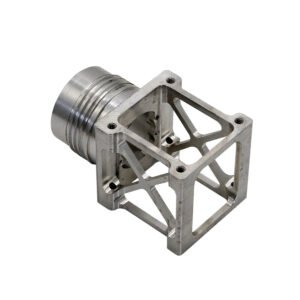
Cost impact for the two steel components
The cost impacts for the two kinds of steel vary from time to time. Overall, carbon steel costs lesser than stainless steel. This is because both carbon and iron are available vividly. As chromium is a rare mineral, it appears that stainless steel items or alloy steel items would cost more than carbon steel. At the same time, sourcing and manufacturing with carbon steel are easier and more cost-effective than alloy steel items. Using alloy steel may increase cost, while carbon steel manufacturing appears to be cost-effective.
High Carbon Steel Vs Alloy Steel
High carbon steel has 0.55% to 0.95% carbon, while manganese content in it is 0.30% to 0.90%. This is a strong content than the average carbon steel or mild steel. They do not get plastic deformation. The same you can see in knives, as high carbon steel is used to produce knives. Popular larger knives contain about 0.75% carbon. The high-end knives have 0.95 carbon that gives them a greater edge. Hard carbon steels are hard to machine or weld. However, it is also true that very high carbon steel is super hard but super brittle.
Alloy steel is different and special due to the components in it. Unlike carbon still, it is generally hard (according to the utility, it can be super hard as well) but not brittle. Just consider iron or steel beams of bridges. They sustain weather and other adversities year after year. Above 8% total alloying is high alloy steel. As the toughness is adjusted in alloy steel, it would be hard to say what would be the outcome of the hardest alloy steel. But it is true that working with alloy steel appears to be very hard, as the alloying components and their ratios differ from one alloy item to the other.
In terms of alloy steel, you need to know that if you put it under a microscope, the grains may appear bigger or smaller. The difference is that the bigger the grains are, the softer the metal would be. It means the opposite or smaller grains signify harder metals. Therefore, for alloy steel items, it can be summarized by saying that the bigger and stronger constructions would observe the use of harder metals for assuring stability.
Alloying elements
Manganese – A4 tool steel uses 1.8% to 2.2% of manganese and comes with a slower cooling rate.
Chromium – Over 11% chromium would observe the transformation into stainless steel with less corrosion. 309 (Grade) stainless steel has 23% chromium and is created for high-temperature resistance. D2 is tool-steel and comes with 11% to 13% of chromium in it, and is considered semi-stainless.
Molybdenum – It increases corrosion resistance up to one point. It works with manganese to reduce the quench rate. A4 tool-steel holds about 0.9% to 1.4% molybdenum. It is mostly used for heavy gears, large shafts, and various tools in the steel industries.
Vanadium – Heat treating of material or material’s stability in terms of heat treating is decided with the use of vanadium in alloy steel.
Nickel – All common stainless steel items have nickel (304-grade steel) to boost corrosion resistance and increase toughness. It would not rust and sustain a long run.
Endnote
You can see both sorts of steel items, carbon steel and alloy steel all around you. All of the items serve their purposes accordingly. Therefore, there can never be a proper comparison. Alloy steel has the ingredients present in carbon steel. Carbon steel is viewed with its impurities, while alloying allow steel to be more prominent in approach according to the requirements. But again, as has been mentioned before, it is easy to work with carbon steel than alloy steel due to the customization in it. However, the world of steel observes the utilization of carbon steel with a more cost-effective approach than alloy steel.

